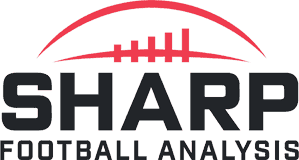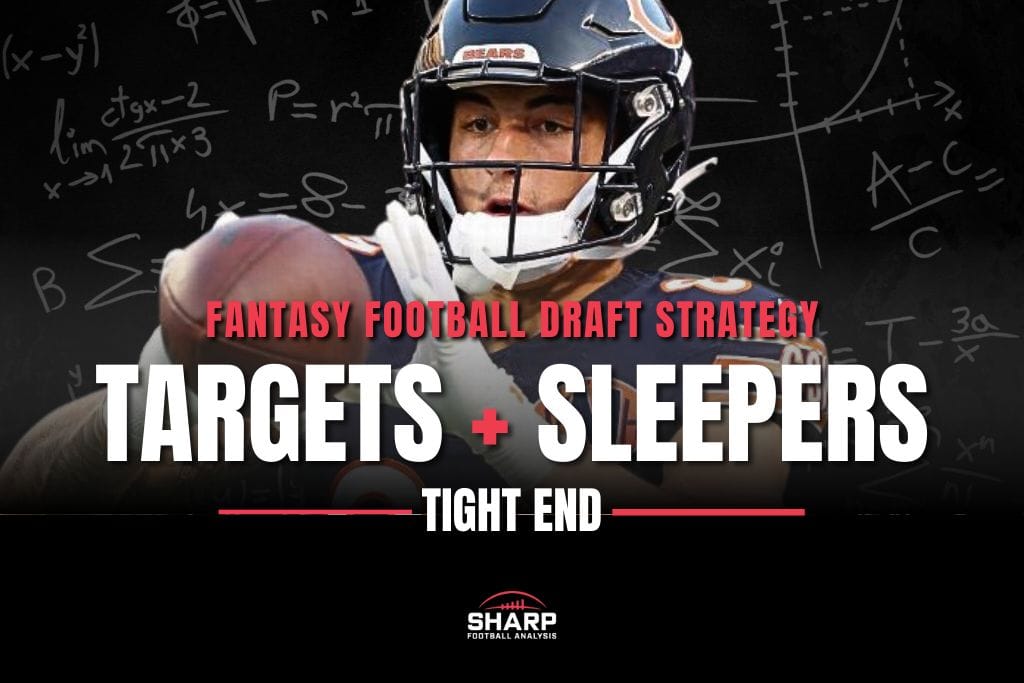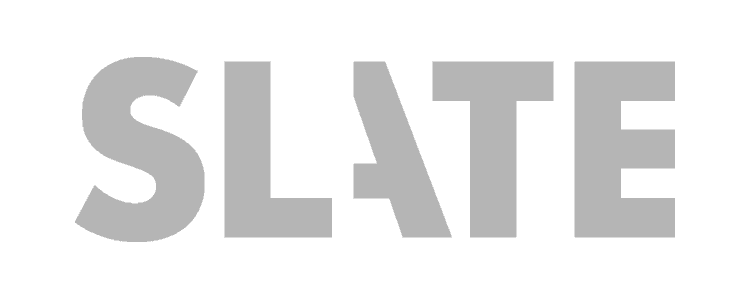Everything this offseason has built up to this point.
With the 2025 Draft Kit in place as a North Star in how to play the game of fantasy football, I also know some of you are here because you want to know how I am playing drafts out myself this summer.
You want the answers to the test.
That is what this week is all about.
This is how I am approaching fantasy football drafts in 2025, continuing with the tight end position.
I will also update this throughout the remaining time in the offseason if we get any significant news that impacts draft approaches.
Even those with the draft kit may not have read every word written this offseason, but I am operating under the assumption you have at minimum checked out the player rankings page.
If you read only one thing, I would push you to the individual player writeups in the positional tiers posts if you haven't already.
With that in mind, these pieces will not be overly statistically centric and fully into the weeds on the pros or cons of each player, instead focusing on the approach to drafting the positions.
If you want further analysis on each player, check out those tiers, but here are some links to running back-related content that has influenced our decision making.
Tight End Fantasy Related Articles:
- Tight End Tiers
- Tight End Rankings
- Tight End Production Heading Into 2025
- Red Zone Points vs Expectation: Tight End
- What We Can Learn From ADP: Tight End
- Stats That Matter: Tight End
2025 TE Fantasy Football Draft Strategy
Tight End is a unique fantasy position because it can carry positional leverage rivaling front-end running back production versus the field.
While there is the leverage you can gain at the position by selecting an early-round tight end, it also comes from a lower scorer than a front-end running back or wideout.
Last season, George Kittle led the position in points per game in full-PPR formats (15.8 per game), but that ranked 32nd among the skill positions in FLEX scoring.
Trey McBride was 34th while Brock Bowers was 35th.
In half-PPR formats, it was a tick worse.
Kittle ranked 35th, Bowers ranked 42nd, and McBride ranked 43rd.
Apex Travis Kelce is the only player we have seen in recent years who has had a season that was ranked as a top 12 FLEX scorer, and he only did it twice.
Pairing that with a significant opportunity cost by not getting in on those running back and wide receiver positions, since the baseline at tight end is so much lower than those two positions that require the most roster allocation on your teams.
You still want a running back with a path to an elite outcome.
You still want an elite wide receiver.
The selection of the TE1 at premium draft cost forces you to play catch up at one of those spots.
Could Bowers or McBride have a runway to deliver a front-end TE1 scoring season?
Yes.
I have McBride 11th in projected target volume this season.
Bowers is just a mega talent.
This is the only two-time Mackey Award Winner in college who just caught 112 passes in his first NFL season.
I am confident he is a good bet in terms of talent.
Both McBride and Bowers popped as players who were unlucky scoring touchdowns last season and should be bets to make at turning that around.
However, in a similar fashion in the way we talk about paying up for quarterbacks who are passing reliant to score points (the other onesie position), the margin for error is too broad.
These front-end tight ends HAVE to push 100 receptions and double-digit touchdowns to compete with the running backs and wide receivers.
Both McBride and Bowers can provide tangible position leverage compared to the field of tight ends this season, but remember this is not a one-on-one decision because you are bypassing a running back or wide receiver with that draft capital.
Don't Miss Out on The Best Fantasy Football Coverage in the Business
Like the NFL, fantasy football never sleeps.
From rankings to the best draft strategies, Sharp Football has everything you need to get ready for the fantasy season in our Fantasy Football Draft Kit, powered by premier fantasy football analyst Rich Hribar.
Save more by bundling the Draft Kit with our in-season fantasy package that features Rich's comprehensive “Worksheet” preview of every game, every week of the NFL season.
Click here for more information about our fantasy coverage!
I ran the numbers a week ago, and on average, taking a running back or wide receiver paired with baseline tight end production held an edge compared to an early round tight end paired with baseline running back or wide receiver production.
I will not aggressively push you completely off taking either Bowers or McBride in the second round because you find comfort in having them and believe those players can trump those averages (and I find both to have low bust rates without injury), but that has made it harder for me to pay up for Bowers or McBride this season in regular formats without special scoring for the position.
The running back and wide receiver field is just so strong this year at the top that I don’t want to leave those players on the table.
Fantasy tight ends are in a unique place this offseason.
Tight ends have been trending up in league-wide usage as a group.
That also coincides with a depressed usage in TE1 usage since more tight ends are playing snaps as offenses combat the shell coverage with heavier sets.
What we are entering the season with is a clear big-two at the position in Bowers and McBride, with a short skip to Kittle as TE3 in drafts.
I do have a gap between Bowers and McBride to Kittle based on the career arcs of those two younger players, paired with both having a more straightforward path to 150-ish targets and Kittle’s history of missing some time in season.
However, out of those three tight ends, I do land Kittle the most based on the way the boards typically play out.
Kittle should open the year as the primary pass catcher in the San Francisco offense with all of the moving parts once again this offseason.
Then the floodgates open and things flatten out.
After Kittle is usually drafted, we are waiting close to three more rounds before the next tight end is drafted.
In 10 to 12 team leagues, only three teams are going to get one of those front-end tight ends.
Yes, those three could have an advantage on the field, but you may only have to play those teams once each in the fantasy season, while the other 75% of your league is in the same bucket if missing out.
I have a hard time seeing how any solo tight end truly destroys the field from a leverage stance.
If there were one clear guy like we used to have with Kelce, it would make chasing that outcome more appealing.
Even if Bowers smashes, there will still be McBride and Kittle teams.
While Kittle does land in a softer spot to grab him, don’t be scared to play the field.
Tight End Premium Leagues & Auction Strategy
Here is where we hit our caveats when it comes to the front-end tight ends.
While my preferred approach has been letting the room dictate how aggressively I am selecting a tight end this summer, there are league-to-league factors that increase the viability of taking one of the power players at the tight end position early.
- TE Premium Scoring (base FFPC scoring)
- Auctions
- Leagues that require only two starting wide receivers (base FFPC requirement)
- Leagues without FLEX positions
If you are in these formats, you should play things more aggressively with those top two tight ends.
I also believe TE Premium scoring pushes Bowers and McBride a touch further from Kittle since their path to stacking significantly more targets and receptions is greater.
Kittle is amazing per opportunity, but he has not hit 80 receptions in a season since 2019.
Of course, you will have to jump in early in those formats for Bowers or McBride and still push them over a running back or wide receiver, but in something such as the FFPC, you have some of the opportunity cost reduced because that format only forces you to start two wide receivers.
Another way to reduce your opportunity cost is in auctions.
In snake drafts, I inherently know that I am going to need extra bodies at wide receiver and running back, so I prefer to use my higher-end draft capital at those positions to ensure I have as many swings as possible at those positions when they offer the most enormous bang for my investment.
In auctions, we are still spending equal round value to acquire a front-end tight end, but now we are not completely freezing ourselves out of players that have similar draft costs to the degree those binary decisions are in a snake draft.
In auctions, I will not force tight end, similar to my approach in snake drafts.
But I do want to hang around on the pricing of those front-end options in an attempt to land some value compared to the equivalent of their snake draft cost.
That also allows operating under the agency that if I do want to pay up for an elite tight end, I can still land high-caliber running backs or wide receivers of similar costs.
When I do that, I am using a barbell approach, removing salary that would have gone to mid-round players.
What TEs to Target After the Top Three
As noted, only three teams in your league are landing one of those front-end tight ends, and that will typically happen within the first three rounds of your drafts.
We still have the rest of the draft to go.
Like quarterback, if I miss out on the top tier of the tight ends, I am just sitting on my hands and waiting for a pocket of the draft to hit where I do not like the running backs or wide receivers available to me.
While the field is not as alluring, we have had some veterans get decent runouts this summer to boost their early-season viability.
Mark Andrews is due for touchdown regression this season, but the unknown timetable for Isaiah Likely‘s return gives him added juice to open the year strong.
Andrews was still a hyper-efficient player outside of the touchdowns last season; he just played fewer snaps.
This Likely injury pushes him into a larger role to open the year.
In the one game that Likely missed last year, Andrews set season highs in snaps (87.3%) and route rate (94.4%), catching 6 of 7 targets for 68 yards and a touchdown.
T.J. Hockenson also received a boost this summer with Jordan Addison officially suspended for the opening three games of the season, and Minnesota suffered a plethora of preseason injuries to their wide receiver room.
Travis Kelce also could have a spike in early-season opportunity if the Rashee Rice situation is resolved before the season kicks off, but that one is more nebulous at the moment and projects to be an in-season bump in the most likely outcome.
Those opportunity spikes to open the year make these veteran picks more appealing, but do not overcount them as full-season runouts because their situations are likely to be fluid in season.
Likely and Addison will find the field again, while we wait and see what happens with Rice.
Use a measured approach when grabbing those players.
I usually will only grab either if they do fall below ADP, or I hit a lull at running back or receiver.
I would not select any of Kelce, Andrews, or Hockenson over a running back or receiver I have laid out as a target at the same ADP cost.
My preference is Andrews because he still has a better path to being second on the Ravens in target opportunity, even when Likely does return.
The players with TE1 ADP and checking both of those boxes are David Njoku, Evan Engram, and Dalton Kincaid.
Are you excited to pick any of those players?
Probably not, but they are the best blind bets to make based on historical trends at the position.
Kincaid is usually the cheapest of those options, but both Njoku and Engram are being drafted in viable spots.
I outright prefer Njoku among that group because I believe the Browns will have to throw a lot this season based on projected game scripts, and the quarterback situation has a low bar for improvement compared to a year ago.
Njoku has been a top-five scorer in points per game at the position in each of the past two years, despite the Cleveland offense's struggles.
With Joe Flacco in 2023, Njoku posted 2.41 yards per route run with a target on 27.8% of his routes.
Unfortunately, unless the Browns were to punch above their expectations in the win column, it would be malpractice for them to play Flacco for the whole season when they could be looking at their two rookie quarterbacks.
Dillon Gabriel and Shedeur Sanders could be good for Njoku. If that happens, it simply requires an additional step of faith.
I am not forcing Njoku, but don’t mind grabbing him if he’s a faller.
If I do not get one of those three players we just talked about, I want to bet on young talent and let the fantasy deities take the wheel.
In the past three seasons, we have seen a rookie end the season as a TE1 scorer, and the past two seasons have seen a rookie end the year with the most fantasy points overall at the position.
I do believe the latter trend ends this season as Colston Loveland and Tyler Warren have too much target competition compared to a rookie-year Sam LaPorta (who ran hot on touchdowns while Jameson Williams was still dog housed) and Brock Bowers (who had elevation with the Davante Adams trade and playing on a bad team to boost route opportunities).
That said, these are two decorated rookies who have upside, even if they do fall short of keeping that TE1 overall streak alive.
The other player I want to bet on at ADP cost is Tucker Kraft.
I would make a case for him being my favorite pick at the position based on cost and upside.
Yes, his target situation is as muddy as Loveland's and Warren’s, but that is already priced in.
Kraft offers Kittle-lite potential.
Remember, early-career Kittle also was a volatile player who relied on efficiency over volume (and still does to a degree in the context of the top target earners at tight end).
Kraft averaged 14.1 yards per catch, second among tight ends behind Kittle (14.2).
Like Kittle, Kraft was great after the catch.
He had 456 yards after the catch (TE5) and a league-high 9.1 yards after the catch per reception.
Kraft had 11 receptions of 20 or more yards, which trailed only Kittle (21) and Brock Bowers (15).
He ended up with 1.48 yards per team pass attempt, which was TE5 on the season.
Kraft was also more involved when the Packers got near the end zone.
He had 21.1% of the team's targets in the red zone (TE12).
When we get past Kraft, I do keep an eye on Dallas Goedert as the final firewall player I feel comfortable entering the season with as my starter.
Goedert, unfortunately, is attached to an elite wide receiver and another wide receiver selected far above his cost as red flags. Still, he has significant contingency value while I have outright been placing bets on the Philadelphia passing game this season.
After Goedert is selected, the final “break glass” targets for me are Chig Okonkwo, Hunter Henry, and Brenton Strange.
Okonkwo checks the box of being a top-two target earner on his roster.
Henry is a low-cost buy on being the prominent red zone target in an improved offense.
Strange is an impressive athlete, getting his first opportunity to be a full-time player in an offense we are expecting to throw the ball a lot.
The 2025 Tight End Draft Plan
Laying all of this out in a more cohesive and linear game plan:
- I would not aggressively push back on taking Brock Bowers or Trey McBride in the second round, but my preference for play this year has been to take running backs and wide receivers with that draft capital.
- Bowers and McBride become more attractive in TE Premium formats and auctions.
- Of the big three, George Kittle is the first player I monitor and land regularly, since he often falls into a draft zone where I am avoiding the wide receivers available.
- Mark Andrews, T.J. Hockenson, and Travis Kelce all received news this summer to elevate their outcomes, but all of those positives could have expiration dates in season. I prefer Andrews of that group, but I would not select any over a running back or receiver I have laid out as a target at the same ADP cost.
- They are far from sexy picks, but David Njoku, Evan Engram, and Dalton Kincaid have the most significant signal as values based on historical trends at the position. I prefer Njoku from that group.
- Bet on young talent. Colston Loveland and Tyler Warren were elite prospects.
- Tucker Kraft is a perfect blend of cheaper cost and per-play upside. He is my favorite pick based on talent and cost.
- Dallas Goedert is the firewall for the position.
- My favorite late-round picks are Chig Okonkwo, Hunter Henry, and Brenton Strange.

















